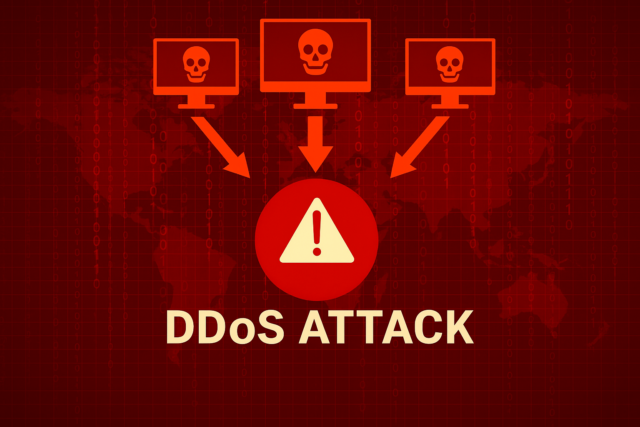DDoS and IP transit: Why integration is the smart choice for modern connectivity

As Distributed Denial of Service (DDoS) attacks grow in both frequency and sophistication, organizations are being forced to re-evaluate their defensive strategies. Gone are the days when a standalone DDoS mitigation service tacked onto your infrastructure was enough for peace of mind.
The current threat landscape demands faster response times, simplified operations, and coordinated protection. A rising trend is the integration of DDoS mitigation directly with IP transit from a single provider.
This bundled approach offers performance, security, and operational benefits at a time when there is zero tolerance for uncertainty around the impact and scale of attacks. Sectors like finance, in which every millisecond counts, are particularly at risk and increasingly looking to batten down the cybersecurity hatches. For example, April 2025 saw global payments platform Adyen suffer 8 hours of disruption over two days after being targeted.
On the surface, choosing a single provider for both services might seem counterintuitive. It’s similar to how some travelers hesitate to purchase travel insurance directly through the airline, perhaps perceiving it as unnecessary or overpriced. But, just as bundling your travel insurance with your flight often leads to fewer surprises and a smoother journey, integration improves coordination, simplifies accountability, and provides peace of mind.
The case for integration over isolation
Combining DDoS mitigation with IP transit consolidates your protection and connectivity into a single framework. This alignment enables quicker and more effective responses to threats, as the provider has full visibility and control across both mitigation and transit layers. Without needing to coordinate between separate suppliers, responses are faster, and the chances of traffic bottlenecks or miscommunication are significantly reduced. There are four key factors to consider that demonstrate why integration is the smarter choice.
Reduced complexity and increased accountability
A multi-vendor setup can introduce operational friction. When DDoS protection is managed separately from IP transit, organizations often face delays in mitigation due to the need for traffic rerouting and coordination between providers. When problems arise, the division of responsibility can lead to finger-pointing and unresolved issues. With an integrated provider, you get a single service-level agreement (SLA), one point of contact, and clear accountability. This simplicity not only reduces downtime, but also streamlines internal workflows and reporting.
Smarter, more precise protection
One of the major advantages of integration is the ability to minimize collateral disruption. When an attack is detected, integrated providers can surgically reroute only the affected target’s traffic through a scrubbing center, ensuring the rest of the network operates as usual. In contrast, third-party protection providers typically rely on broader Border Gateway Protocol (BGP) advertisements, often requiring entire subnets to be diverted, which in turn can unnecessarily degrade overall network performance and user experience.
Adapting to different customer mindsets
Broadly speaking, I deal with two kinds of customers: those that have experienced a DDoS attack, and those that haven’t (yet). The former group tends to understand the urgency of a robust, integrated defense. They’ve seen firsthand the cost of downtime, reputational damage, and lost revenue.
The latter, however, may view DDoS protection as a “nice to have” rather than a necessity. Educating those who are yet to suffer an attack about the proactive benefits of integrated protection is key to helping them stay ahead of threats.
Better visibility and decision-making
When DDoS protection is integrated with IP transit, providers can access a complete picture of your traffic patterns, enabling more informed and responsive security measures. This holistic view improves traffic analysis and supports more strategic decision-making, from routing adjustments to long-term infrastructure planning. It also reduces the amount of sensitive network data shared externally, which supports better data hygiene and security.
A baseline, not a bolt-on
DDoS protection should no longer be treated as a separate add-on to IP transit. Instead, it should be considered a key component of an integrated strategy that provides assurance without additional complexity or hidden costs. Bundling the two together with one provider creates a more resilient, agile and streamlined network infrastructure, allowing organizations to deal with both current and future threats more effectively.
As attacks continue to evolve, integration is the smartest way forward. Organizations that treat DDoS protection as a seamless extension of their connectivity will be best placed to stay online, stay secure, and stay in control.
William Manzione is Product Manager at RETN.
